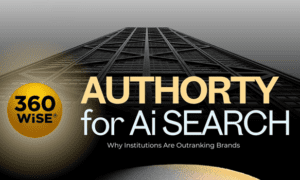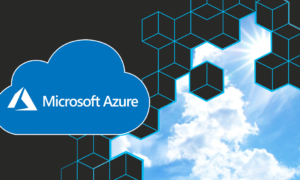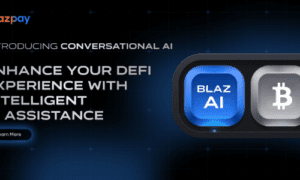Are you ready to take a sneak peek into the future of technology? Get ready to dive into the top 10 tech trends of 2024 and discover what innovations are set to shake up the world as we know it. From artificial intelligence advancements to new ways of connecting with each other, this list will give you a glimpse into what’s on the horizon. Join us as we explore the cutting-edge technologies that are shaping our future!
The importance of staying updated with current tech trends
With technology constantly evolving and advancing at an unprecedented pace, it has become essential for individuals and businesses alike to stay updated with the latest tech trends. In today’s fast-paced world, falling behind on technological advancements can have dire consequences, hindering growth and creating disadvantages in a highly competitive market.
Staying abreast of current tech trends not only allows us to keep up with the ever-changing landscape of technology but also empowers us to harness their potential and use them to our advantage. By staying updated, we can identify new opportunities for personal or professional growth, whether it is by learning new skills or implementing novel technologies in our work.
Moreover, being informed about the latest tech trends helps us make more informed decisions when it comes to investing in new technologies or upgrading existing ones. Instead of relying on outdated systems that may not be as efficient or cost-effective anymore, keeping up with current tech trends allows us to strategically invest our resources in technologies that will bring value and drive progress for our organizations.
Being knowledgeable about tech trends is also crucial from a consumer perspective. With the constant launch of new gadgets, software, and services catering to various needs and preferences, consumers are often left overwhelmed with choices. By staying updated on current tech trends, individuals can make better purchasing decisions based on their specific needs and preferences rather than simply following popular fads.
Furthermore, staying updated with technology ensures that we do not get left behind in this digital age where almost every aspect of our lives is affected by technology. From communication and education to healthcare and transportation – technology plays a crucial role in all aspects of our daily lives today. Thus, being aware of current tech trends allows us to adapt quickly to changing circumstances and take advantage of innovative solutions that enhance our overall well-being.
Explanation of methodology for predicting trends in technology
The constant advancements in technology have significantly impacted the way we live, work and communicate. As such, staying ahead of emerging trends is crucial for individuals and businesses to remain relevant in an ever-changing landscape. But how exactly do experts predict what could be the next big thing in tech? In this section, we will delve into the methodology used for predicting trends in technology.
One key approach to forecasting technological trends is through analysis and observation of existing patterns. This involves closely monitoring consumer behavior, market demand, and industry developments to identify potential opportunities and areas for growth. Market research data, survey results, and trend reports are often utilized to gain insights on consumer preferences and needs.
Another important aspect of predicting tech trends is keeping a pulse on emerging technologies. Experts closely follow new inventions, breakthroughs, and innovations that have the potential to disrupt industries or create new markets. Through careful analysis of these developments, they can anticipate which ones will become more widely adopted in the future.
Experts also turn to data analytics as a valuable tool for forecasting tech trends. By using algorithms and machine learning techniques to analyze large amounts of data from various sources such as social media posts and online searches, patterns can be detected early on that may indicate upcoming technological shifts.
Collaboration with industry leaders is another critical element when it comes to predicting tech trends accurately. Conferences, trade shows, workshops or other events where different professionals come together provide an opportunity not only to network but also exchange ideas about current technologies and potential future developments.
Moreover, trend analysts employ scenario planning as a method for anticipating future possibilities based on different hypothetical situations. This helps them to prepare contingency plans should unexpected circumstances occur during their prediction process.
Drawing from past experiences plays an essential role in identifying upcoming tech trends. Studying historical records of previous disruptions or innovations allows trend forecasters to identify patterns that could help them make informed predictions about the future.
Advancements in Artificial Intelligence (AI) and Machine Learning (ML)
Artificial Intelligence (AI) and Machine Learning (ML) have been making waves in the tech industry for the past few years, and it’s no surprise that they continue to be at the forefront of technological advancements. AI refers to computers or machines being able to perform tasks that would normally require human intelligence, while ML is a subset of AI focused on teaching machines how to learn from data without being explicitly programmed.
Recent advancements in AI and ML have opened up new possibilities for various industries, with their potential impact reaching far beyond just technology. One major development has been the creation of more sophisticated algorithms that can process vast amounts of data faster than ever before. This has led to improved performance in many areas such as speech recognition, natural language processing, and object recognition.
One of the most significant achievements in AI and ML is deep learning, which involves training neural networks with multiple layers to mimic human brain functioning. This type of machine learning has revolutionized areas such as image and voice recognition, leading to incredible accuracy levels.
The integration of AI and ML into everyday devices also continues to expand rapidly. From smartphones with virtual assistants like Siri or Google Assistant to smart home devices such as Amazon Echo or Google Home, these tools are becoming increasingly common in our daily lives.
In addition to consumer-facing applications, businesses are also harnessing the power of AI and ML for various purposes such as fraud detection, customer service chatbots, predictive maintenance in manufacturing processes, and many others. These technologies allow companies to streamline operations, optimize resources and make informed decisions based on data analysis.
Another notable advancement in this field is autonomous vehicles powered by AI technology. Companies like Tesla are already rolling out self-driving cars equipped with advanced sensors and algorithms designed to interpret real-time traffic data accurately.
However, with every groundbreaking development comes concerns about potential ethical issues surrounding privacy invasion or job displacement. As AI and ML continue to evolve, it is crucial to ensure that these technologies are ethically implemented and regulated.
The rise of Virtual and Augmented Reality (VR/AR)
The world of technology is constantly evolving, and one of the most exciting developments in recent years has been the rise of virtual and augmented reality (VR/AR). These immersive technologies have captured the imagination of users and businesses alike, leading to a surge in their adoption across various industries. In this section, we will take a closer look at the top trends driving the growth of VR/AR and explore their potential impact on our future.
Firstly, let’s define what virtual and augmented reality mean. VR refers to an entirely computer-generated environment that immerses users in a simulated experience. This is usually achieved through a head-mounted display or other peripherals that create a sense of presence within the virtual world. On the other hand, AR overlays digital information onto real-world surroundings using devices such as smartphones or smart glasses.
One major factor contributing to the popularity of VR/AR is their ability to enhance user engagement. By creating highly interactive and realistic experiences, these technologies are revolutionizing how we consume media and interact with content. From gaming and entertainment to education and training, VR/AR has opened up new possibilities for storytelling, learning, and communication.
Moreover, businesses are leveraging VR/AR for marketing purposes by providing customers with immersive product experiences. For example, automotive companies use AR technology to allow potential buyers to visualize different color options or configurations of cars before making a purchase. Similarly, furniture retailers offer customers an opportunity to see how specific pieces would fit into their homes using AR apps.
Another aspect driving the growth of VR/AR is its widespread adoption in healthcare settings. These technologies have proven particularly useful for medical training simulations that provide students with hands-on experience without risking patient safety. Additionally, doctors can use AR overlays during surgeries or procedures for guidance or displaying patient data in real-time.
Looking ahead, it’s clear that advancements in hardware capabilities such as 5G networks will only accelerate the development and adoption of VR/AR. This will open up new use cases such as remote work and collaboration, allowing employees to feel like they are in the same room even when working from different locations.
Blockchain technology and its potential impact on industries
Blockchain technology has made a significant impact in recent years, with its revolutionary approach to data storage and management. The term “blockchain” refers to a decentralized digital ledger that stores information in blocks, which are then linked together in a chronological chain. This technology has the potential to disrupt multiple industries and transform the way businesses operate.
One of the key components of blockchain is its ability to create secure, tamper-proof records. Each block contains a unique code called a hash, which connects it to the previous block in the chain. Any attempt to alter or delete information within a block would also change its hash, making it immediately apparent that the data has been tampered with. This makes it nearly impossible for hackers or malicious actors to manipulate data on the blockchain.
This level of security is especially beneficial for industries such as finance and banking, where sensitive personal and financial information is constantly at risk of cyberattacks. By utilizing blockchain technology, these industries can ensure more secure transactions and protect their customers’ data.
Another major advantage of blockchain technology is its ability to increase transparency and efficiency in supply chains. With traditional supply chains relying on paperwork and intermediaries, there’s often a lack of visibility throughout the entire process. Blockchain eliminates this issue by providing real-time tracking of products from production to distribution.
Furthermore, blockchain’s smart contract capabilities allow for automatic execution of agreements between parties once certain conditions are met. This streamlines processes such as payment settlements, reducing delays and errors caused by manual processing.
In addition to finance and supply chain management, healthcare is another industry that can benefit greatly from blockchain technology. The secure and traceable nature of blockchain allows for efficient sharing of medical patient records across different providers while maintaining privacy protocols.
Beyond these specific industries, we’re also seeing an increase in companies exploring ways to incorporate blockchain into their operations. From media companies looking at using blockchain for content distribution rights management to governments utilizing it for voting systems – there seems to be no limit to the potential applications of this technology.
5G technology and its implications for connectivity
G technology, also known as 5G, is the next generation of wireless connectivity that promises to revolutionize how we interact with technology. It offers faster and more reliable connections, lower latency, and the ability to support a larger number of devices simultaneously. This has significant implications for connectivity in various industries and our daily lives.
One of the biggest impacts of G technology is its potential to transform communication networks. With speeds up to 100 times faster than 4G LTE, G can open doors to new possibilities for data-intensive applications such as virtual and augmented reality, autonomous vehicles, and remote surgeries. This level of connectivity will be crucial in powering smart cities with interconnected systems such as traffic control, energy management, and public safety.
In addition to enhancing communication networks, G also holds the potential to spur innovations in the Internet of Things (IoT) space. Its high bandwidth capacity enables a massive number of connected devices to communicate with each other seamlessly. This will pave the way for advancements in smart homes where every device from refrigerators to thermostats can be controlled remotely through a smartphone or voice assistant. The healthcare industry can also benefit from G’s low latency by improving patient monitoring through wearable sensors that transmit real-time data without any lags.
Another significant implication of G technology is its impact on business operations. With faster connections and lower latency rates, businesses can improve their productivity by using cloud-based services more efficiently and conducting video conferences without any disruptions. Industries such as manufacturing can also leverage this technology by implementing advanced robotics processes that require high-speed connections for collaboration between machines.
The rise of G technology also brings opportunities for economic growth in developing countries as it opens doors for digital inclusion. With affordable smartphones being used as primary internet devices in these regions, faster connections will enable people to access online education resources and financial services easily.
However, with all its benefits comes concerns about security and privacy. As more personal data is transmitted over the internet, protecting it from cyber threats becomes crucial. Thus, G technology will demand stringent security measures to safeguard these networks and devices.
IoT and smart home devices
The Internet of Things (IoT) has quickly become one of the most talked-about tech trends in recent years, and it’s not hard to see why. The idea behind IoT is simple: connecting everyday devices to the internet, allowing them to collect and exchange data for more efficient and automated processes.
One area where IoT has made a significant impact is in the world of smart home devices. From thermostats and security systems to lighting and kitchen appliances, these connected devices have transformed our homes into futuristic, intelligent spaces.
The convenience factor is undoubtedly one of the main drivers behind the rise of smart home devices. Imagine being able to control your lights, temperature, and music with just a voice command or a single tap on your smartphone. This level of control not only makes life easier but also adds an element of luxury to our daily routines.
But it’s not just about convenience – smart home devices also offer significant energy efficiency benefits. For example, smart thermostats can learn your preferred temperature settings and adjust accordingly, ultimately reducing your energy consumption and saving you money on utility bills. And with the ability to remotely monitor and control their usage from anywhere with an internet connection, these devices give homeowners greater control over their energy consumption.
In addition to convenience and cost-saving benefits, smart home devices also enhance safety and security. For instance, surveillance cameras that can be accessed remotely through smartphones provide peace of mind for homeowners who are away from their property. Meanwhile, connected smoke detectors can quickly detect fires or carbon monoxide leaks while simultaneously notifying homeowners through their smartphones.
As technology continues to advance rapidly in this space, we can expect even more exciting developments in the near future. With artificial intelligence (AI) integration becoming increasingly common in smart home devices – think virtual assistants like Amazon’s Alexa or Google Assistant – we can expect a more intuitive experience that adapts better to our lifestyles.
Moreover, as 5G networks roll out globally, we can anticipate faster and more reliable connections for all our smart home devices. This will allow for smoother communication between the various connected devices in our homes, creating a truly seamless and interconnected living experience.
Sustainability and eco-friendly tech solutions
Sustainability and eco-friendly tech solutions have become a major focus in the tech industry in recent years, as the need for more environmentally friendly practices has become increasingly urgent. With global warming and climate change becoming major concerns, businesses are now more than ever seeking ways to reduce their carbon footprint and implement sustainable practices. In this section, we will take a closer look at some of the top sustainability trends in technology that are predicted to make a significant impact in the near future.
One of the most prominent trends is the use of renewable energy sources to power technological devices and infrastructure. Companies are investing heavily in research and development to create new forms of clean energy such as solar, wind, and hydro power. This not only helps reduce carbon emissions, but also ensures more reliable and sustainable sources of energy for powering our devices.
Another important trend is the development of eco-friendly materials for electronic devices. Traditional technology products often contain harmful chemicals that can be damaging to both human health and the environment. However, with growing awareness around these issues, companies are turning towards more environmentally friendly alternatives. For instance, biodegradable plastics made from plant-based materials are being used instead of traditional petroleum-based plastics in certain products.
In addition to using greener materials, companies are also focusing on designing products that have longer lifespans. This reduces electronic waste and promotes sustainability by reducing the need for frequent replacements or upgrades. For example, smartphones with easily replaceable batteries allow users to extend their device’s lifespan instead of replacing it altogether.
Moreover, there is a growing trend towards implementing circular economy principles in technology production processes – whereby resources are kept within the cycle for as long as possible through reuse or recycling methods rather than disposed after use. This not only contributes to environmental sustainability but can also reduce production costs for businesses.
There has been an increasing emphasis on using technology to tackle environmental issues directly. From apps that help people track their carbon footprint or encourage sustainable lifestyle choices, to advanced sensors and analytics that monitor air and water quality – technology is playing a vital role in promoting sustainability and increasing awareness about environmental issues.
The growing role of voice-controlled devices and digital assistants
The past decade has witnessed a significant rise in the use of voice-controlled devices and digital assistants. This trend is showing no signs of slowing down, and it is expected to have a major impact on the way we interact with technology in the years to come. From virtual assistants like Siri and Alexa to smart home devices, such as Google Home and Amazon Echo, these voice-controlled devices have become an integral part of our daily lives.
One of the primary reasons for the growing popularity of voice-controlled devices is their convenience. With just a simple voice command, users can access information, set reminders, play music, control smart home devices, and so much more without having to lift a finger. This hands-free approach allows for multitasking and greater efficiency in completing tasks.
Moreover, advancements in natural language processing (NLP) technology have made these digital assistants more accurate and responsive than ever before. NLP allows them to understand complex commands and respond with human-like interactions. As a result, people are increasingly turning towards these devices as they offer a seamless user experience.
Another factor driving the growth of voice-controlled devices is their integration into various products and services. For instance, many cars now come equipped with built-in virtual assistants that allow drivers to navigate through roads or make hands-free phone calls while driving safely. Similarly, fitness trackers incorporate voices commands that enable users to track their workouts without reaching for their phones.
The impact of this technology extends beyond individual consumers; businesses are also starting to leverage its potential for enhancing customer experiences. Companies are integrating these tools into their operations by developing chatbots powered by artificial intelligence (AI) that assist customers with inquiries round-the-clock. This not only improves customer satisfaction but also reduces operational costs for businesses.
With all these developments under its belt, it’s no surprise that the market for voice-controlled devices continues to grow at an impressive rate. One study predicts that by 2025, the global market will be worth $27 billion. As technology continues to advance and become more accessible, we can expect voice-controlled devices to have an even bigger role in our daily lives.
Conclusion
As technology continues to advance at a rapid pace, it is both exciting and daunting to predict what the future holds. In this article, we have explored the top 10 tech trends expected for 2024 and how they will impact our daily lives. From AI advancements to sustainability solutions, these emerging technologies are set to revolutionize industries and change the way we live and work. As we eagerly anticipate the next big thing in tech, let us embrace these trends with caution and curiosity as we continue on our journey towards a more connected and innovative world of tomorrow.



































